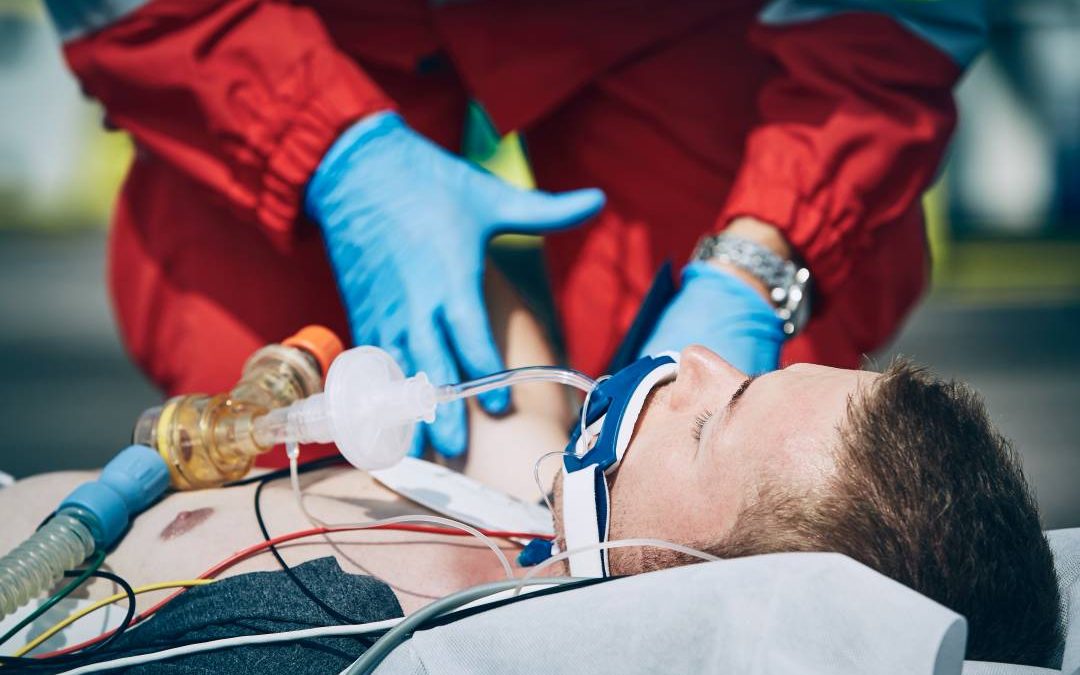Mechanical ventilation (MV) involves the use of a mechanical machine to partially support or completely replace a patient’s ventilation. Since respiration is defined as the exchange of gases in the lungs and ventilation as the exchange of gas mixtures into and out of the lungs, it is clear that the correct terminology should be the term ventilator.
Depending on how air is delivered to the patient, mechanical ventilators can be divided into negative-pressure and positive-pressure ventilators. Negative-pressure ventilators are now obsolete (used during the polio epidemic in the 1950s). Currently, positive-pressure ventilators are used, which utilize the pressure difference between the upper airways and alveoli to push air along the respiratory tract.
Mechanical ventilation can be applied non-invasively and invasively. Non-invasive ventilation is administered via a mask that is securely strapped to the face. Despite its drawbacks, its advantage is that it does not require the insertion of an ET tube into the patient. Invasive mechanical ventilation encompasses several elements. Transport mechanical ventilators for out-of-hospital use need to be lightweight, compact, easy to operate, with an independent power source, and consume less oxygen. They must provide patients with a constant supply of gases at a steady frequency while controlling airway pressure.
COMPONENTS OF A MECHANICAL VENTILATOR:
- Connection to Air and Oxygen Source:
- Oxygen cylinder or central supply.
- Pneumatic System:
- Includes flow and pressure sensors, valves, tubing, and filters.
- Its role is to mix gases (oxygen and air), generate flow, deliver the set volume, and measure pressures in the respiratory system.
- Patient Supply System:
- (heater and humidifier, nebulizer, bacterial filter, tubing)
- Connects the ventilator to the ET tube.
- Ventilator Control Panel:
- The operator inputs ventilation parameters and alarm limits, and can simultaneously see the current ventilation parameters.
Modern mechanical ventilators offer many different modes of mechanical ventilation, but three basic types should be distinguished: controlled, assisted, and spontaneous ventilation.
- Controlled ventilation delivers gases to the patient based on set values such as pressure or volume at a specific frequency. The patient does not initiate any breaths.
- Assisted ventilation can replace or supplement controlled ventilation. Assisted breaths start when the patient attempts to inspire, triggering the ventilator to complete the breath.
- Spontaneous breathing is based on the patient’s demand. The flow and volume are determined by the patient’s inspiratory effort.
VENTILATOR SETTINGS:
- Tidal Volume (TV):
- Expressed in milliliters, it determines the volume the ventilator will deliver to the patient.
- Respiratory Rate (RR):
- Measured in breaths per minute that the ventilator will produce.
- Peak Flow (PF):
- Measured in liters per minute, it indicates the flow produced during mechanical ventilation.
- Oxygen Percentage (FiO2):
- Measured as a percentage, it indicates the concentration of oxygen in the gases delivered to the patient.
- Peak Pressure (PP):
- Measured in centimeters of water, it determines the highest pressure produced during mechanical inhalation.
- Inspiratory Time:
- Measured in seconds, it indicates the duration of mechanical inhalation.
- Inspiratory to Expiratory Ratio (I
ratio):
- This parameter indicates the ratio of the duration of inhalation to exhalation during mechanical breathing.
ALARMS BUILT INTO VENTILATORS
Modern ventilators can be equipped with various alarms. Alarms significantly contribute to the safe application of mechanical ventilation. Alarm limits can be set according to the physician’s preferences or automatically by the machine. It is crucial to set alarm limits based on the patient and their condition, and the alarms should be active throughout the duration of mechanical ventilation.
PHYSICIAN-SET ALARMS:
- High Inspiratory Pressure Alarm: Limits the peak pressure in the airways.
- Low Inspiratory Pressure Alarm: Activates if the peak pressure is lower than set, often due to leaks in the patient’s system (cuff on ET tube) or disconnection from the machine.
- Mechanical Volume Alarm: Indicates delivery of a smaller volume than set, usually due to leaks in the patient’s system.
- High Frequency Alarm: Activates if the respiratory rate exceeds the set value.
- Apnea Alarm: Activates if the patient does not initiate spontaneous breathing within the set time. When this alarm is triggered, the ventilator automatically switches to controlled ventilation mode.
AUTOMATIC ALARMS:
Automatic alarms are not set by the physician but are built into the ventilator’s configuration. If an automatic alarm activates, there is a real danger that could harm the patient. The mechanical ventilator attempts to correct the newly arisen situation.
- Gas Loss Alarm in the Patient’s System: Activates if the machine detects gas loss from the patient’s system and automatically tries to compensate by increasing flow.
- Low Battery Alarm: Present in ventilators with built-in batteries.
- High PEEP Alarm: Activates when the PEEP value exceeds the set limit, automatically opening the expiratory valve to release excess gases.
- Ventilation Tube Obstruction Alarm: Activates if there is an obstruction in the inspiratory or expiratory part of the patient’s system; a safety valve automatically activates to release excessive pressure.
Patient System
The patient system is the part of the ventilator that connects the patient to the mechanical ventilator itself. Its role is to deliver gases from the ventilator to the patient and remove them from the patient. The system consists of three parts: inspiratory, expiratory, and the Y-connector. The inspiratory part includes filters, humidifiers, and nebulizers. The expiratory part includes the exhalation valve, filters, and flow meters. The exhalation valve allows positive pressure to build up in the lungs during inhalation, and valves can be pneumatic or electromechanical. The Y-connector joins the inspiratory and expiratory parts.
Conclusion:
Modern generation ventilators are now in use. Their main features are improved mechanics, sensitive valves, better synchronization with the patient, and increased safety with easier handling. Manufacturers continuously compete in technology, leading to better machines at lower prices. Ventilators come with extensive user manuals that should be carefully studied to use mechanical ventilation to the patient’s benefit.



0 Comments